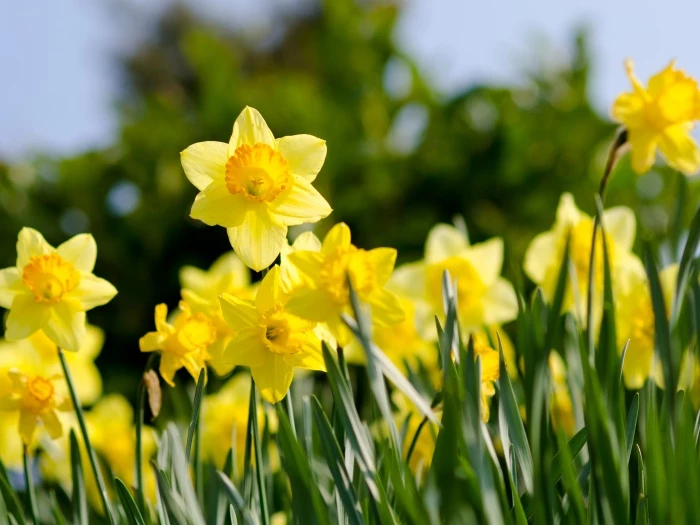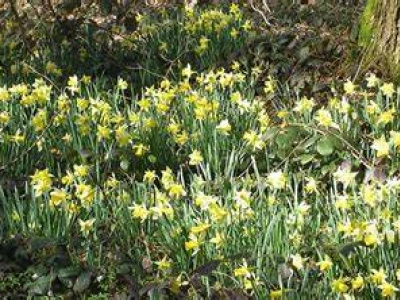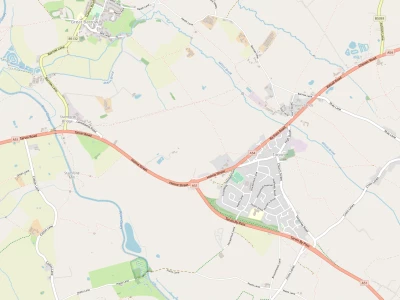
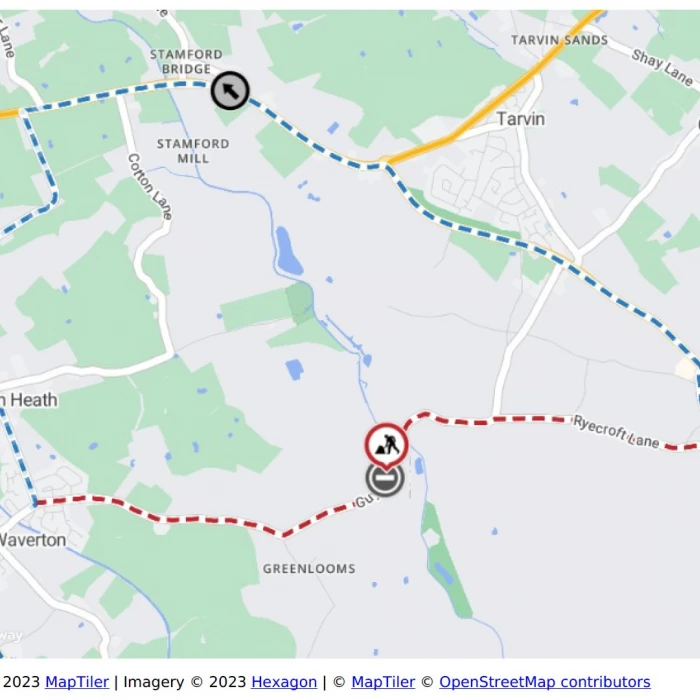

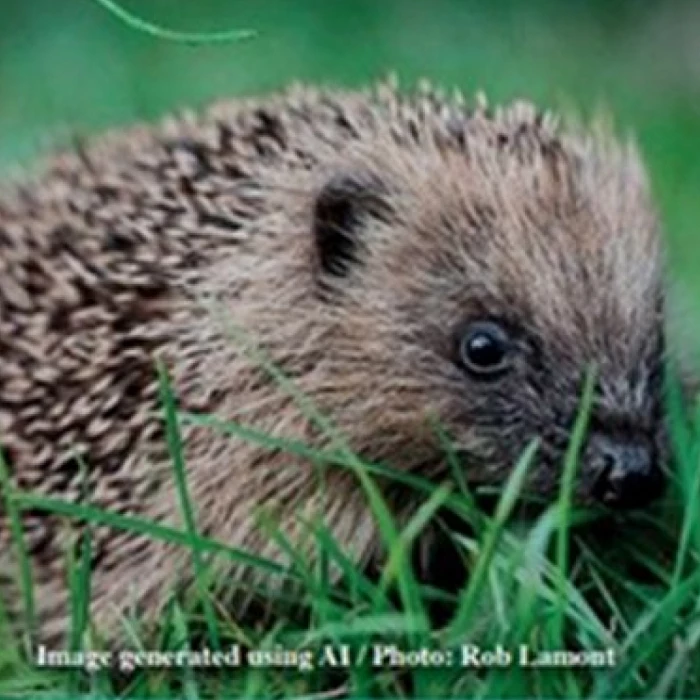


Back at a time before the A51 Tarvin Bypass was built, the land presently occupied by the woodland was all farmed fields – with not a daffodil in sight. Following the completion of the bypass in 1984, the part-fields nearest to the village were landscaped to an extent by the Highways Agency and thereafter planted with some trees to help with sound mitigation – after which they were abandoned to care for themselves. By the time the Parish Council had persuaded the Highways Agency to grant it a Gardening Licence in 1997 (thereby enabling it to legally make changes to the land without fear of prosecution for trespass), dog walkers had made trails across the land and some public-spirited villagers had begun planting spring bulbs. When the Parish Council Sub-Committee began to look after and develop the woodland, a decision was made that only native plants and trees would henceforth be used and so no more cultivated daffodils or crocuses would be planted. However, as a tribute to those folk who had already begun planting them, it was agreed that those plants already there would be allowed to remain. It is still possible to see these in the woodland – mostly in the area close to the Townfield Lane gateway.
in the roadside verges around the woodland – along Hockenhull Lane and around the hawthorn tree at Broomheath Lane – good collections of cultivated daffodils have been planted. This is clearly another manifestation of guerrilla gardening, but these verges are outside the woodland and are the concern of CWaC, which appears not to mind. The bright yellow flowers liven up the area in much the same way as do the drifts of daffodils at the Austins Hill entrance to the village.
Trustees have continued to aim for a woodland full of native trees and flowers and, during the planning of the new woodland next to Saxon Heath, it has been agreed that the large grass area fronting onto Fairfax Avenue will be liberally planted with native perennial flowers, in order to create a good and interesting display of wild flowers through the year. While the summer is relatively easy to deal with (ox-eye daisies, meadow buttercup, vetch, clover, bird's-foot trefoil and so on), the spring is nowhere near as straightforward. Thus it was that the Trustees decided to buy quite a large quantity of bulbs of wild daffodil – the daffodil which, in earlier times, was wide-spread across England and Wales.
Wild Daffodil (Narcissus pseudonarcissus)
This flower is also commonly known as the 'Lent lily' or 'Easter lily' since it often blooms and fades within the Lenten period. It was once one of the most common wild flowers to be found in the English and Welsh countryside. Indeed, these were the daffodils that William Wordsworth described in his poem "I wandered lonely as a cloud" (also frequently referred to as "Daffodils".)
"I wandered lonely as a cloud
That floats on high o'er vales and hills,
When all at once I saw a crowd,
A host, of golden daffodils;
Beside the lake, beneath the trees,
Fluttering and dancing in the breeze."
The Wild daffodil differs from most cultivated varieties because, unlike them, the flower is not entirely bright yellow. The plant has narrow, grey-green leaves and is relatively short, forming clumps which carpet the ground. The flower has the familiar daffodil shape, but with very pale yellow tepals (the tepal is a part of the flower which can be described as being a combination of both a sepal and a petal) which surround a darker yellow trumpet. This two-tone look is one way to tell them apart from their garden relatives.
It is this daffodil which is the national flower of Wales. The name "Daffodil" in Welsh is Cenhinen Pedr – which literally translates as Pedr's (or Peter's) leek – giving the clue to the link with the other symbol of Wales – the leek. The wild daffodil is thought to have been a symbol of Wales only since the 19th century – there seems to be much greater historical precedent for wearing a leek on St David's Day, as records detailing this go back to the 6th century. According to folklore, St David himself ordered Welsh soldiers to wear leeks into battle against the much-hated Saxons, and in the 14th century Welsh archers decked themselves out in green and white leek-themed uniforms. However, it is likely that, offered a choice between wearing either leeks or daffodils on St David's Day (1st March), the daffodil made a more striking (and less-smelly) buttonhole than did the leek! Certainly, Welsh-born Prime Minister David Lloyd George (sometimes called the "Welsh wizard", because of his ability to keep the country unified during the First World War) was one of the first high-profile people to proudly sport a daffodil in his buttonhole on Dydd Gŵyl Dewi Sant – the feast day of Saint David, the patron saint of Wales.
Quick Links
Get In Touch
TarvinOnline is powered by our active community.
Please send us your news and views.

